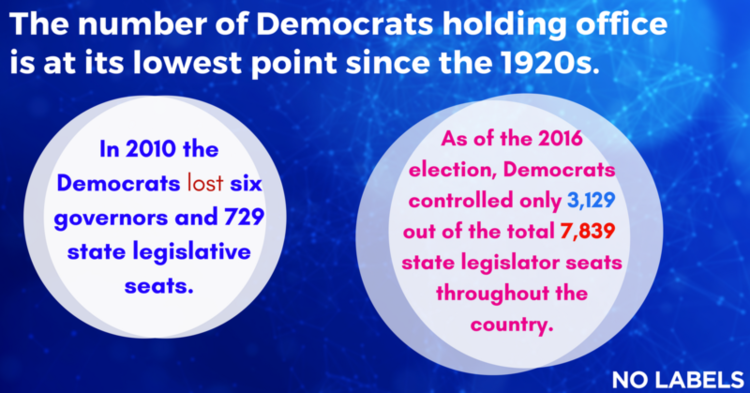The Decline of the Moderate Democrat

Last week, Democratic voters in Illinois’ 3rd Congressional District went to the polls for the area’s first competitive primary in decades. Congressman Dan Lipinski, a moderate Democrat, just barely kept his seat, while Marie Newman, the more liberal candidate with the backing of EMILY’s List and Sen. Bernie Sanders, had a real shot at winning.
But the political Center, including groups No Labels and Country Forward, mobilized to help Lipinski keep his seat. With a victory margin of under 2,000 votes, this race likely would have gone the other way absent of this support.
Regardless, the closeness of the race sent a clear message: Today, moderate Democrats are in danger of becoming extinct on Capitol Hill as well as in state legislatures and in governors’ mansions. Many of the more conservative Democrats no longer feel like they have a place in the party, as the base continues to send strong messages that they want gun safety, climate-change action, and pro-choice legislation. This polarization, in turn, has made statehouses more red.
Here are five facts you need to know about the decline of the moderate Democrat, and how it has impacted government at the state level.
1. Today, the number of Democrats holding office is at its lowest point since the 1920s. According to a new report from the leadership PAC of Rep. Cheri Bustos (D-Il), Democratic candidates across huge swaths of the country struggle to connect with voters. The report also notes that Bustos, a third-term congresswoman who represents northwest Illinois, is the only elected member of House Democratic Leadership from the Heartland (Illinois, Indiana, Iowa, Michigan, Minnesota, Missouri, Ohio, and Wisconsin). She serves as co-chair of the Democratic Policy and Communications Committee.
2. The Midwest, a place where Democrats had been competitive at the state level, has changed dramatically in recent years. According to Bustos’ report, in 2009, Democrats controlled four of the eight state Senates in the region (Illinois, Iowa, Minnesota, and Wisconsin). Today, they control just one (Illinois), having lost 49 seats in less than a decade. Similarly, Democrats held six of the region’s eight governorships in 2009; now they hold one. Bustos attributes this to the party’s failure to attract rural voters.

3. While Democrats have been struggling at the state level for years, the 2010 election was especially devastating. That year, the party lost six governors and 729 state legislative seats. This hemorrhaging continued through 2016. As of the 2016 election, Democrats controlled only 3,129 out of the total 7,839 state legislator seats throughout the country.
4. After the 2016 election, Republicans won a trifecta in 24 states: control of the governor’s office and both chambers of the state legislature. According to the New York Times, Republicans also picked up a trifecta in four additional states (Iowa, Kentucky, Missouri, and New Hampshire) that year. In contrast, Democrats had a trifecta in just six states after the 2016 election.
5. Not all is doom-and-gloom for Democrats at the state level. Since President Trump was elected, the party has won the New Jersey governorship, control of the Washington state Senate, and 34 new state legislative seats across the country, Politico reported in February.
No Labels is an organization of Democrats, Republicans, and independents working to bring American leaders together to solve problems.




